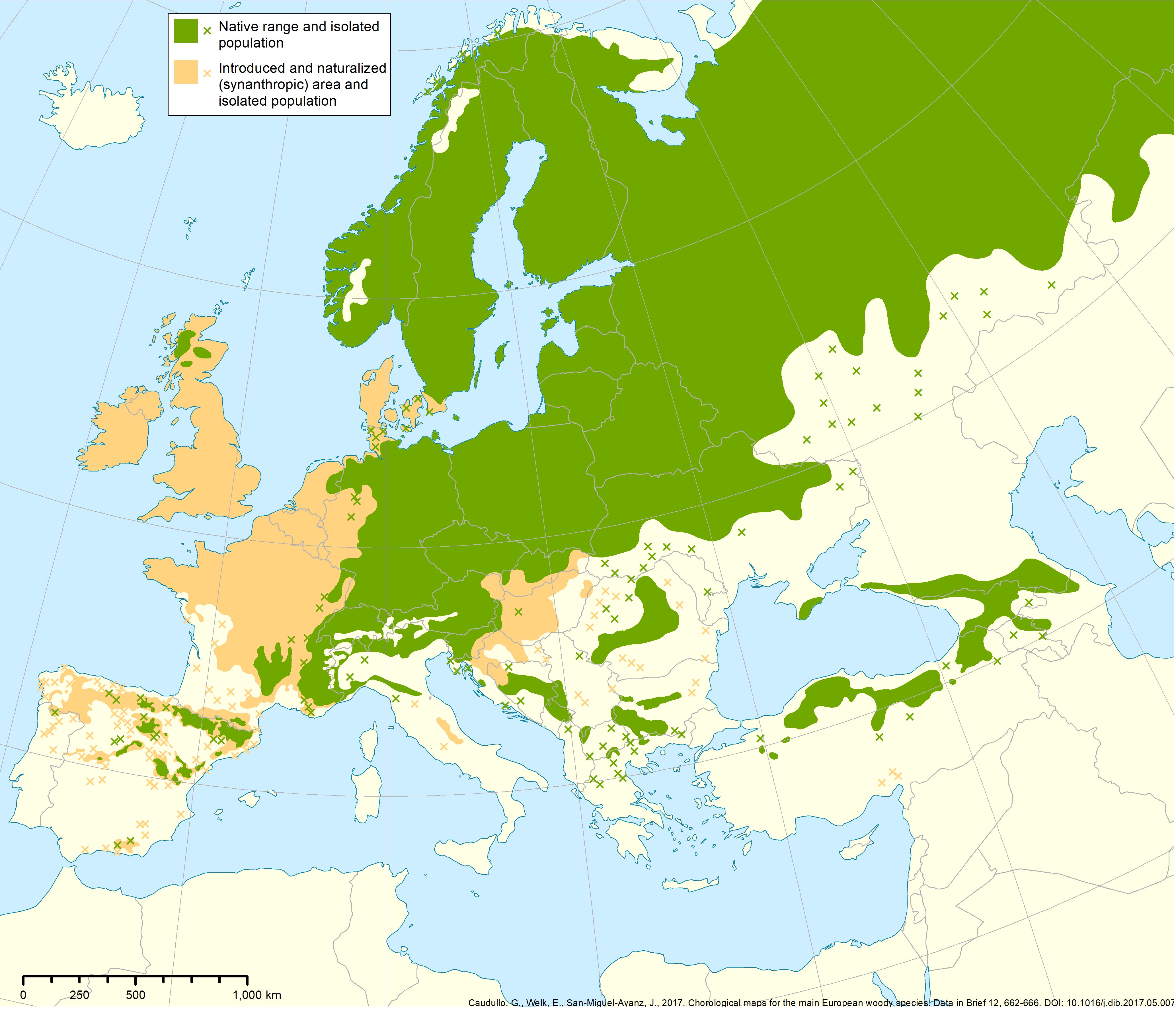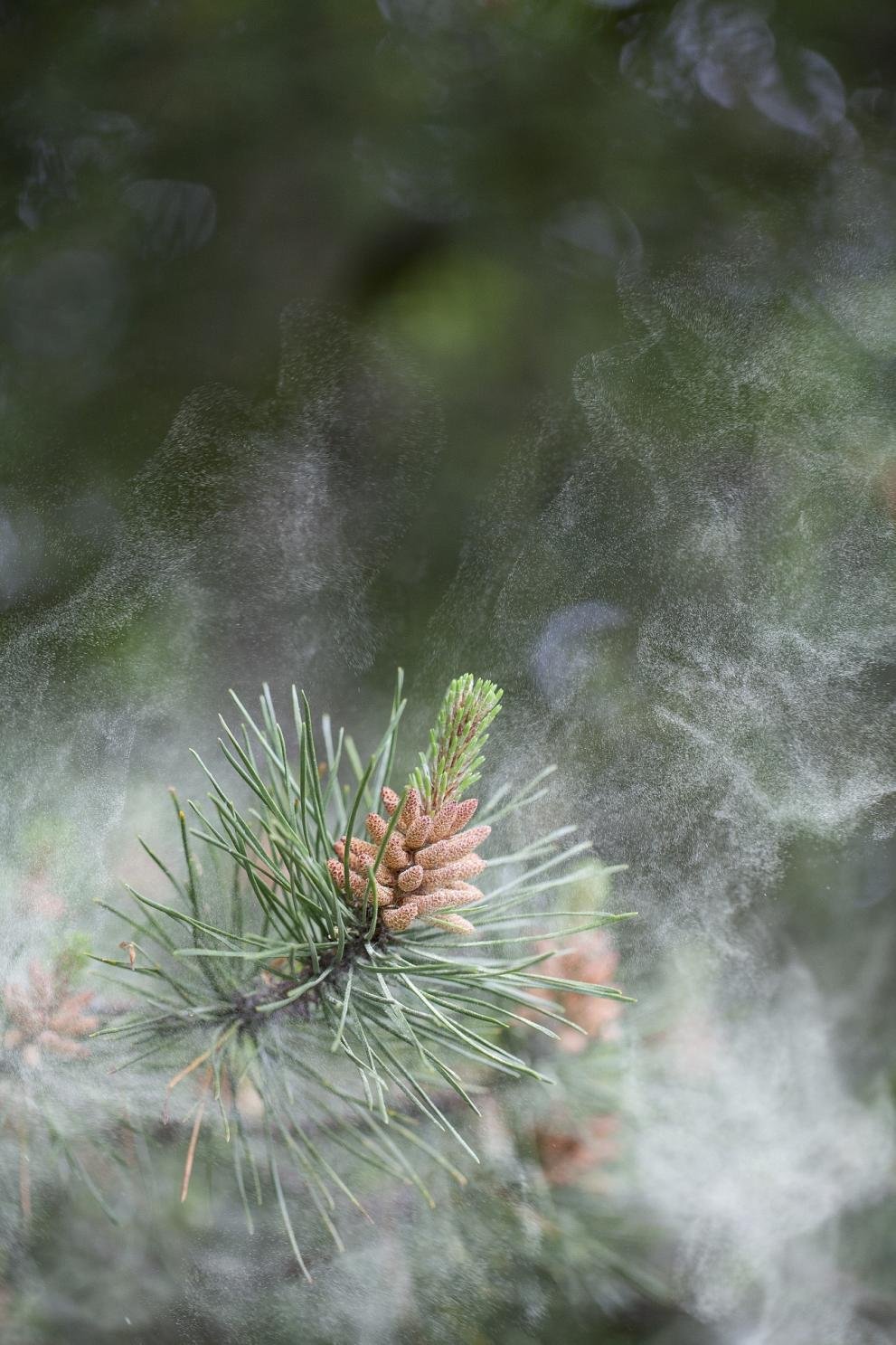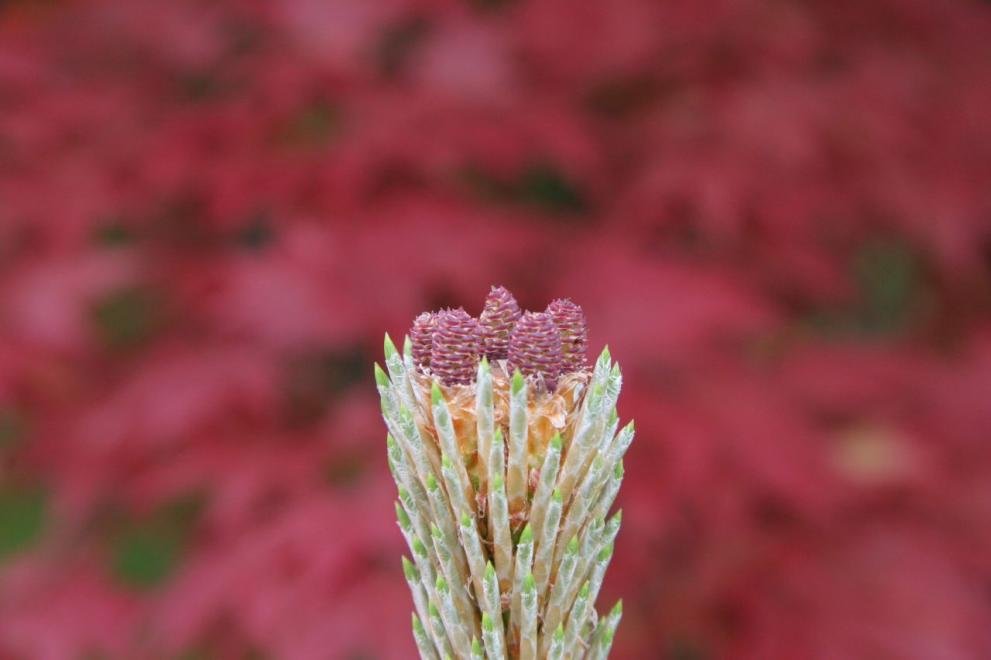Pinus sylvestris L.
French: pin sylvestre
German: Waldkiefer, Gemeine Kiefer, Rotföhre, Weißkiefer
Italian: pino silvestre
Etymology of Latin species name: sylvestris = from forest, as it forms large forests
Where it grows
The Scots pine is found from Western Europe to the far-east of Russia, and from northern Scandinavia to the mountains of southern Europe (Pyrenees, Alps and Balkan Mountains). It grows at seal level in the northern part of its range and at over 2 600 m above sea level in the Caucasus. This pine frequently forms large single-species forests especially in the Boreal regions, but across its wide range it can be also found with many other tree species.
What it looks like
The Scots pine is a medium-sized conifer, reaching 30-35 m in height, only exceptionally over 40 m, and 50-130 cm in diameter. The life-span of this pine is about 250 years, sometimes up to 400 years. It develops an open crown with spreading branches. The stem is characterized by the reddish-orange bark in the upper part. Leaves are needle-like, blue-green in colour, 5-7 cm long and set in pairs. Male flowers are numerous, clustered at the base of new shoots and yellow or pink when mature. Female flowers occur on the tips of the shoots and become rose-purple at pollination. The cones develop the year following pollination and are conic 5-8 cm in size. In autumn the cones open and shed the winged seed, which are dispersed by the wind.
Uses
Scots pine is one of the most commercially important tree species, especially in northern Europe. It is used for pulp and sawn timber production (buildings, construction, furniture, etc.). The wood is easily workable and is one of the strongest softwoods. This pine is a pioneer species and grows on poor soils; for this reason it is also planted for land reclamation and anti-erosion purposes, and as a windbreak.
Did you know?
- Scots pine is frequently used in dendrochronology, the study of the annual rings of trees, because it is relatively long lived and often grows in marginal conditions, where small fluctuations in temperature and/or moisture can have a noticeable effect on its growth and ring size.
- In Scandinavia and Russia resin is extracted from Scots pines to produce the “Stockholm tar”. This product is used traditionally as a wax for wood and ropes to protect them from the elements, to weatherproof, or to improve the grip (e.g. applied to the handles of baseball bats, or to the Nordic-style skis). Nowadays this tar has been substituted by synthetic products, which can be more easily produced industrially.
- In the USA Scots pines are planted for growing as Christmas trees.
- Scottish Highlands were once covered by forests composed principally by Scots pines. They have been overcut mainly for timber demand and for creating cattle pastures. Now only small portions of the ancient Scots pine forests still remain in Scotland, covering about 17 000 ha.
Check out the European Atlas of Forest Tree Species. It has much more information about Scots pine and many other tree species in Europe's forests.

Distribution map of Scots pine in Europe. Source: Caudullo et al. 2017 - CC-BY 4.0.

Branch with open pine cones. © USDA-NRCS PLANTS Database - PD 1.0

Male flowers dispersing pollen. © Adriankirby, Pixabay - CC0 1.0

Native Scots pine forest, Sgurr na Lapaich, Glen Affric, Scotland. © Erik Fitzpatrick, Wikimedia – CC-BY 2.0

Female purple flowers at the tip of a new shoot. © Rudolf Baumann, Flickr – CC-BY 2.0

Isolated Scots pine with the characteristic open crown and spreading branches. © Ashley Basil, Flickr – CC-BY 2.0

Scots pine plantation near Bydgoszcz, Poland. © Pit1233, Wikimedia – CC0 1.0

